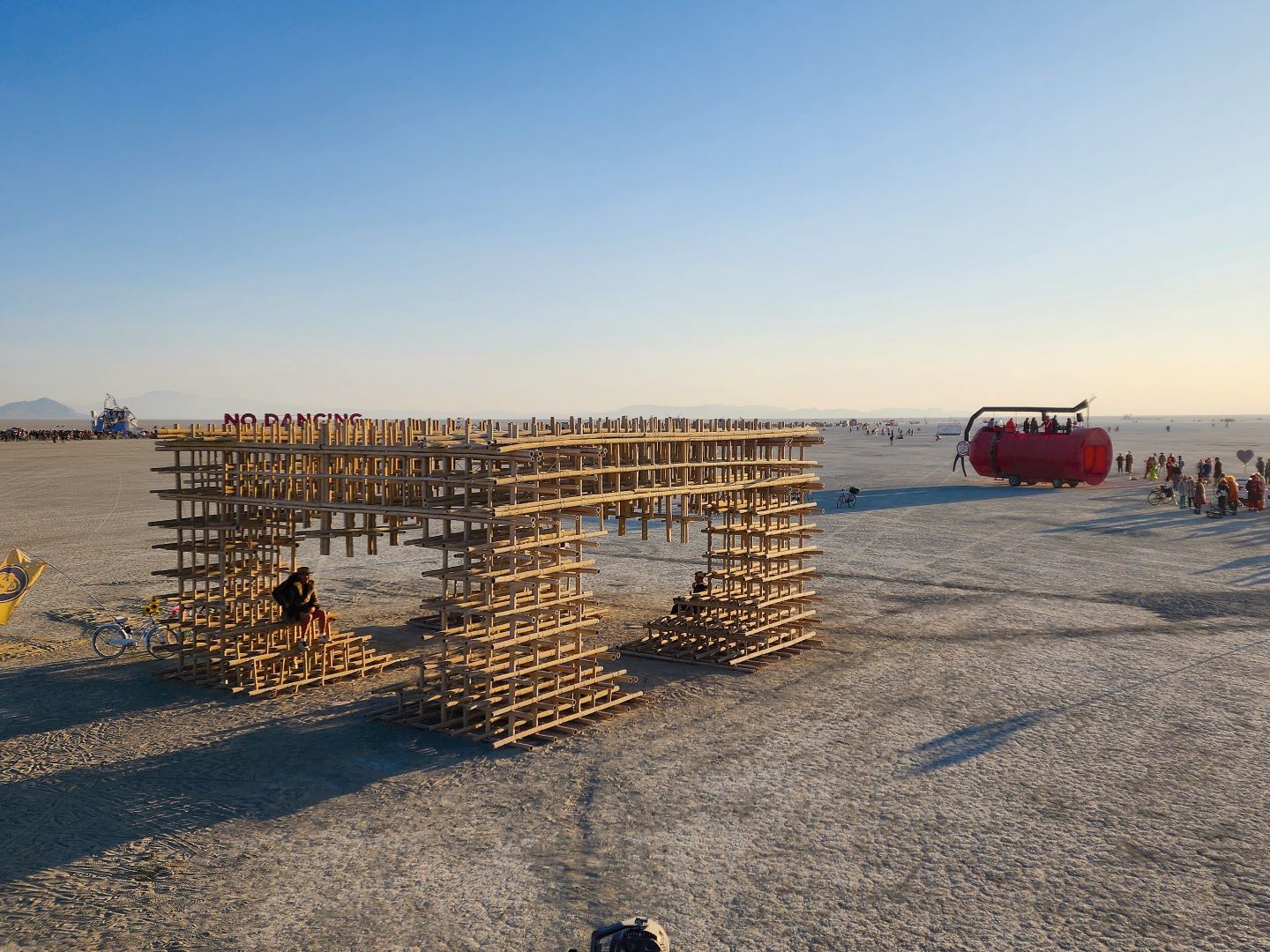
Heartburst at Burning Man during the day (All photos: Lucas Loo)
In northern Nevada’s Black Rock Desert in the US, a seemingly barren landscape transforms into a vibrant, otherworldly city for just one week each year. This is the realm of Burning Man, an annual gathering that defies categorisation, convention and ultimately, any description. It is a place where the ordinary rules of society are discarded, replaced by a radical experiment in self-expression, community and artistry. Some liken it to a cult but for its ardent followers, it is a utopian city built on “a self-supporting enterprise that is capable of sustaining the lives of those who dedicate themselves to its work”.
It is more than a festival and undeniably, a cultural phenomenon that has captured the imaginations of thousands from around the globe. Elon Musk has been a Burner for the past 20 years. Mark Zuckerberg has been, as has the Google boys, Sergey Brin and Larry Page. Who would have thought that what started as a small group of friends who set a wooden effigy ablaze on a San Francisco beach in 1986 would evolve into this week-long celebration of creativity, freedom and human connection.
As the event expanded in scale and allure, it has drawn individuals of diverse backgrounds — from artists and engineers to philosophers and dreamers. Collectively, they construct a transient city larger than half of Kuala Lumpur, a place devoid of commerce, spectators and inhibitions. Within this realm, participants evolve into active creators and the lines separating performer from audience dissolve, giving rise to an exhilarating spectacle of self-expression.
After a few days, this city is burnt to the ground, erasing any evidence of its existence. While predominantly frequented by the non-religious, this festival is steeped in ritual.
lucas_loo_new.jpg
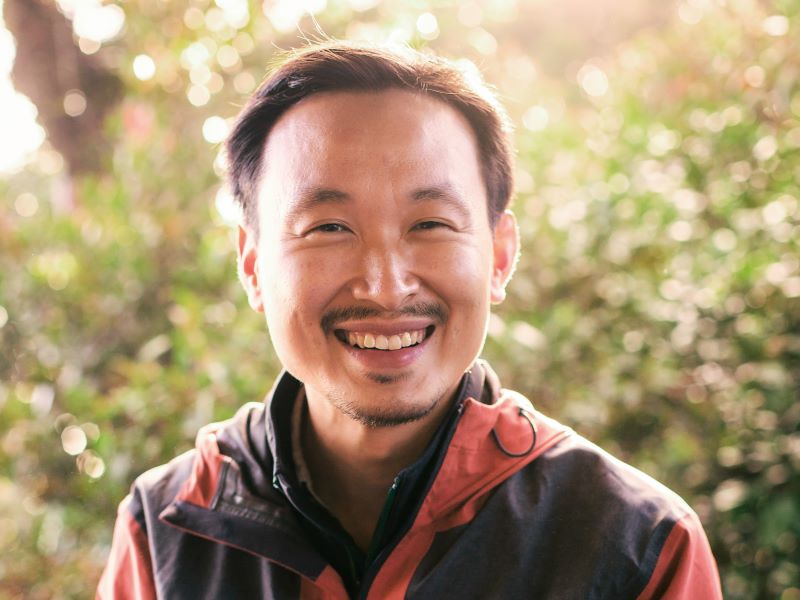
According to its official website, Burning Man is “inspired by the values reflected in the Ten Principles and united in the pursuit of a more creative and connected existence in the world. Throughout the year we work to build Black Rock City, home of the largest annual Burning Man gathering, and nurture the distinctive culture emerging from that experience”.
The 10 commandments of sorts, penned in 2004 by co-founder Larry Harvey as guidelines for the newly formed regional network, are: radical inclusion, gifting, decommodification, radical self-reliance, radical self-expression, communal effort, civic responsibility, leaving no trace, participation and immediacy.
Under “leaving no trace” is this entry: “Our community respects the environment. We are committed to leaving no physical trace of our activities wherever we gather. We clean up after ourselves and endeavour, whenever possible, to leave such places in a better state than when we found them.”
This year’s Animalia-themed festival aimed to “celebrate the animal world and our place in it”, but was disrupted by unexpected, heavy rainfall. Road closures were imposed just before a giant wooden effigy was supposed to have been burned on the night of Sept 2.
News reports depicted thousands (with some sources even suggesting numbers as high as 73,000) stranded in a muddy desert, facing shortages of food and water. To exacerbate the situation, there were even suggestions of a potential Ebola outbreak.
Among the attendees was 35-year-old Malaysian Lucas Loo, co-founder and executive director of SEAD Bamboo, an impact enterprise that provides building design and environmental consultancy services. Loo came from a business management background, which got him into the field of tourism. He started the Tadom Hill Resorts in Banting, Selangor, with some partners almost a decade ago and that led to the discovery of the multi-bottom line potential of bamboo as they started building the resort out of it.
He committed his career towards realising the regenerative properties of bamboo and started SEAD in 2017 with Toh Hua-Jie, his business partner.
loo_far_right_with_the_three_principles_of_officeuntitled_benjamin_anderson_left_shawn_gehle_and_christian_robert.jpg
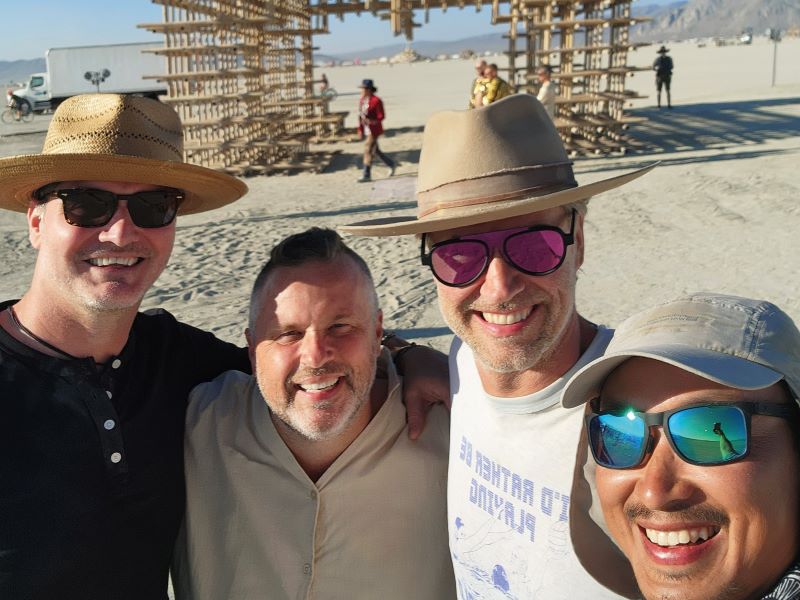
How did this Burning Man installation project happen?
“Heartburst was birthed by OfficeUntitled, a progressive architecture firm in Los Angeles. Five years ago, we collaborated on an exciting project designing bamboo gas stations that actually proved to be feasible. So, when OfficeUntitled thought of designing a bamboo pavilion for the Burning Man, we got connected and the rest is history,” Ipoh-based Loo relates in an email interview.
His mission was to bring his expertise in bamboo craftsmanship to life by creating an awe-inspiring installation that would captivate the hearts and minds of all who attended this remarkable event. His work represents a fusion of artistry, sustainability and innovation, poised to leave a lasting impact on this iconic festival.
The Burning Man typically has up to 200 installations on-site and each plays an important role in spreading the message of the festival. It took a lot of meticulous planning to execute a project remotely, from pre-cutting the bamboo in precise lengths to shipping, pre-fabrication, logistics to the desert and finally, constructing the pavilion in hostile, off-grid conditions.
“Yet, there were many unforeseen circumstances that arose but it was amazing how we managed to push through every single one of them, including a hurricane!” Loo stresses that the structure packs a conservative estimation of negative 7.5 mt CO₂e carbon footprint even after all the logistics.
What it means is most construction materials are, at best, carbon neutral, if not positive.
“Meaning the moment it leaves the factory, it would have caused some level of net carbon emission. Our bamboo, on the other hand, because of the way it rapidly regenerates if harvested the right way, actually stimulates even higher carbon sequestration rates,” he explains.
it_took_a_lot_of_meticulous_planning_to_execute_the_project.jpg
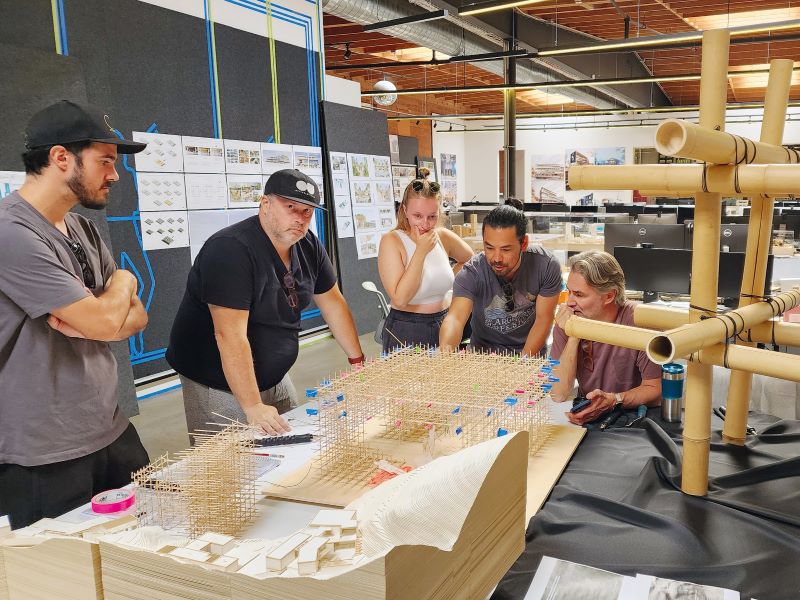
This is a radical idea, he adds, for there is no other structural material on earth that could sequester more carbon by harvesting it. Even the fastest-growing trees stop sequestering carbon the moment we cut them down.
The Burning Man is a journey that changes many people’s lives and perspectives. There’s something about being out there in the vast desert that opens your mind and helps you embrace new ideas.
“Our entire journey was rough,” Loo recalls. “We had to drive giant 26ft box trucks loaded with our bamboo, gear and sustenance for ourselves over a 15-hour journey into a desert.
“Hurricane Hilary flooded our path and caused delays, turning the desert into a giant mud plain. When we finally managed to get started on building, sandstorms kicked in and we were 15ft up in the air on bamboo and scaffolds. Hammering away wearing masks and goggles, we could still find dust in mysterious places of our bodies.”
However, he says, there was never a moment of regret. They were all there to contribute something special to Burning Man and it only felt like a privilege even in their hardest moments.
“That’s the gifting spirit everyone has at the festival. It’s the biggest stage for radical expression. We’ve always been fascinated by the amazing installations there and dreamt of being part of that community. We are so grateful for the opportunity and look forward to more collaborations in the future.”
laying_the_groundwork.jpg
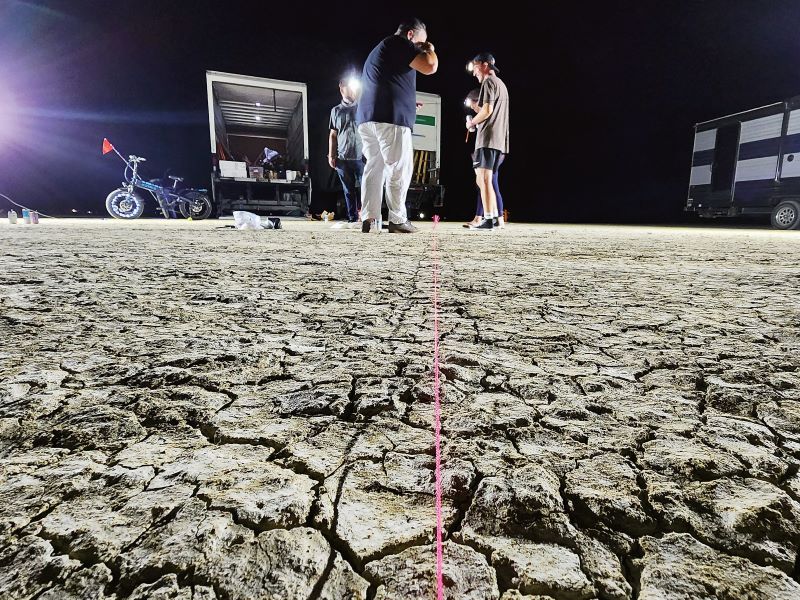
Loo finds the news has always been trying to paint a bad image of the large-scale desert event. “We hardly heard of an Ebola outbreak on the ground. Even as the rain poured and grounded everyone in mud, people were still making the best of the moments on the ground. Most were dancing in the rain, cooking for each other and caring for other folks’ needs. For many of us, this could really be one of the best Burning Man [events] ever!”
The festival takes sustainability very seriously. It is, after all, inducted in their principles. “Obviously, it is difficult to make do without single-use materials and gas-powered generators out there, but progress in these areas is really starting to show. There were many camps running on solar energy, and this is in line with [another of] its principles — leave no trace.
“Everyone takes it very seriously, although this year, the exit was messy as people were stressed from being grounded at the site and some didn’t manage to take all their matter with them. To my knowledge, after every event, the Burning Man team would scour the entire venue for every single visible particle and make sure the place sees no trace of the event. They have been doing so successfully for decades, I don’t see why this year would be different.”
heartburst_by_night.jpg
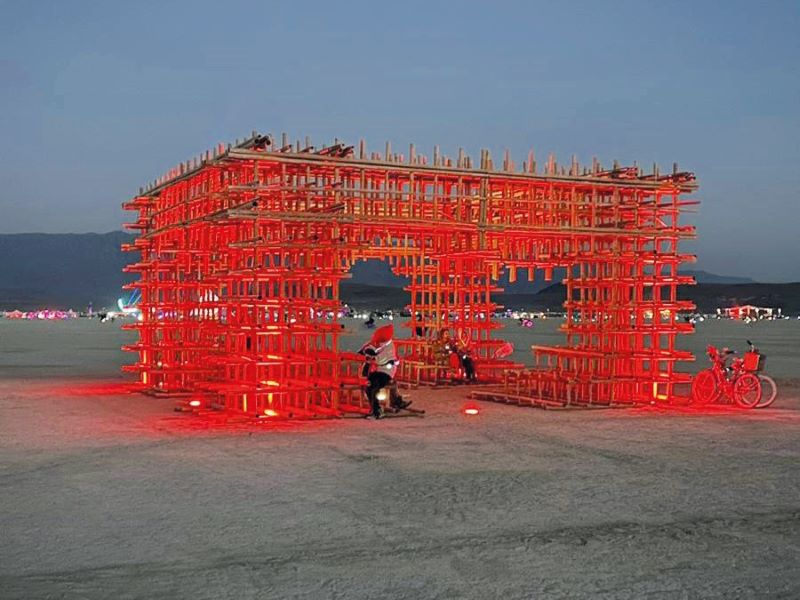
The installation was moved to an art gallery in Bakersfield, California and plans to display it as a quarter for auction are underway. Once sold, the entire structure will be rebuilt at the buyer’s preferred site.
What’s certain is that Loo and his enterprise are changing the world, one bamboo at a time, and he considers it an absolute honour to be working on a mission for which he has a deep conviction.
“Bamboo presents one of the most radical regenerative and carbon-negative pathways for the construction industry, which is one of the most extractive and carbon-emitting industries in the world.”
His heart is gradually filling with contentment as the world begins to comprehend and acknowledge the strength and sustainability of bamboo, and that’s all that matters.
This article first appeared on Oct 9, 2023 in The Edge Malaysia.


